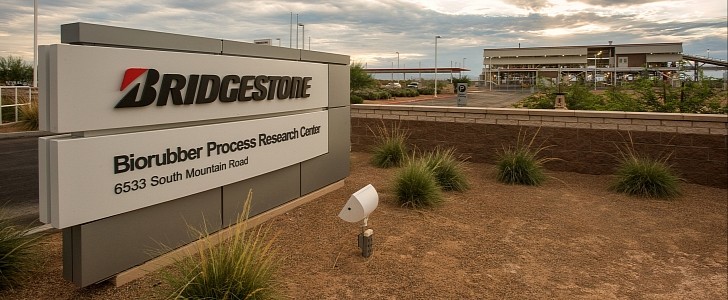The effort of decarbonizing transportation and making it more sustainable goes down to the tires, which should be made from natural rubber. Sustainability goes hand in hand with circular economy in the case of tires and rubber specialist Bridgestone. After having introduced the first tire made from alternative natural rubber (obtained from guayule) Bridgestone Americas is now gearing up for large-scale production.
Guayule is an evergreen shrub that grows in arid environments, from the southwestern part of the U.S. to northern Mexico. It’s important because it can be a great alternative to the para rubber tree that is the main source of natural rubber, at the moment.
Its main advantage is that it can grow in areas that are totally different from the ones in which the para tree grows, and that there are water-starved locations. This brings a double benefit. On one hand, it diversifies natural rubber sourcing, which makes it more easily available. On the other hand, guayule crops can replace the ones that require more water in these areas that are facing water shortages.
Bridgestone was one of the pioneers of guayule research, having opened a processing and research center dedicated to this plant a decade ago, in Mesa, Arizona. In addition to that, it operates a guayule farm in Eloy, Arizona. The company has worked closely with the Environmental Defense Fund (EDF), an NGO that promotes solutions for water shortage in the area, and it’s also expanding its collaboration with local farmers, in order to plant 200 acres (80,900 hectares) of guayule shrubs this year.
The government is also supporting the advancement of guayule use for tires. Bridgestone was recently awarded a research grant by the U.S. Department of Energy Joint Genome Institute. After all, having a domestic source of natural rubber for tire production could be considered a strategic asset.
Using these funds, Bridgestone will select the genes of three guayule varieties for optimizing the plant’s rubber content. The objective is to be able to harvest guayule at scale by the end of this decade and do so in a sustainable way. That will be a major step for the tire expert that plans to produce tires made from 100% renewable materials by 2050.
Its main advantage is that it can grow in areas that are totally different from the ones in which the para tree grows, and that there are water-starved locations. This brings a double benefit. On one hand, it diversifies natural rubber sourcing, which makes it more easily available. On the other hand, guayule crops can replace the ones that require more water in these areas that are facing water shortages.
Bridgestone was one of the pioneers of guayule research, having opened a processing and research center dedicated to this plant a decade ago, in Mesa, Arizona. In addition to that, it operates a guayule farm in Eloy, Arizona. The company has worked closely with the Environmental Defense Fund (EDF), an NGO that promotes solutions for water shortage in the area, and it’s also expanding its collaboration with local farmers, in order to plant 200 acres (80,900 hectares) of guayule shrubs this year.
The government is also supporting the advancement of guayule use for tires. Bridgestone was recently awarded a research grant by the U.S. Department of Energy Joint Genome Institute. After all, having a domestic source of natural rubber for tire production could be considered a strategic asset.
Using these funds, Bridgestone will select the genes of three guayule varieties for optimizing the plant’s rubber content. The objective is to be able to harvest guayule at scale by the end of this decade and do so in a sustainable way. That will be a major step for the tire expert that plans to produce tires made from 100% renewable materials by 2050.






